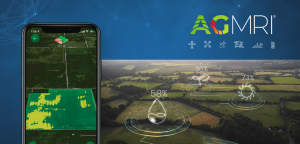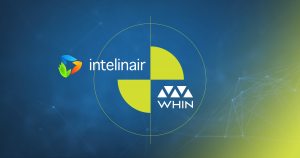How AI and Aerial Imagery are Changing the Game for Crop Nutrition
Nitrogen fertilizer is critically important to the successful production of corn crops, but using excess amounts carries both a financial and environmental cost. While methods to detect nitrogen in crops exist, they are far from feasible on a large scale. Plant tissue sampling, while highly accurate, takes time and specialized equipment or a lab, making its application on a large scale impractical. However, a study[1] released in December 2021 proposes a new approach to nitrogen detection – aerial observation. Read the full article here.
Published in the International Journal of Applied Earth Observation and Geoinformation, this study by Sheng Wang and colleagues attempted to determine if nitrogen content in plants could be detected on a radiospectromic level. In other words, they were attempting to determine if light and radiation coming off plant leaves could be analyzed to determine the approximate nitrogen content of those plants. This concept is not entirely new, NDVI imagery, a common analytic in determining crop health widely used by agronomists, is based on this same principle: taking readings of light and near-infrared radiation reflected off plants and using it to draw conclusions about crop health.
The researchers prepared a test field of corn in Central Illinois, which they sectioned into 12 zones that received varying levels of nitrogen fertilizer. The regions were then observed by an aircraft outfitted with sensors to collect hyperspectral (reflected light/radiation) data at three growth stages: once at V1, again at V2, and finally at VT. This data was analyzed by both the researchers and a machine learning algorithm. At the same time, the crops were tested by reliable plant tissue sampling methods to determine their nitrogen content. At the end of the study, the researchers concluded that it was indeed possible to determine nitrogen content in plants through hyperspectral data alone, at an approximate accuracy of 85%.
While this study is recent and the conclusions will require further research, the possibilities this presents are exciting, to say the least. Accurate and efficient nitrogen detection can allow farmers to optimize their fertilizer applications, reducing potential environmental impacts, as well as reducing overhead costs. Should additional aspects of crop health prove predictable through hyperspectral imagery, an entire discipline of aerial agronomy could open up.
At Intelinair, we are intimately familiar with the power of machine learning and image analysis in agronomy. Our AGMRI platform already uses AI to analyze color, infrared, and thermal imagery. This system can accurately predict and assess a number of aspects of crop health, including disease, weed pressure, and most relevantly, nutrient deficiency. While our current methods can only tell when a crop is lacking nutrients, it already helps farmers save time and money on applications. If the preliminary conclusions of this research prove accurate, integrating it into our existing system could benefit everyone. We have already tested hyperspectral analysis and our own system and are considering using it for disease detection. Seeing confirmation of this technology’s efficacy is encouraging and seeing another potential avenue of use opens even more possibilities. Integrating nitrogen detection into our already powerful crop health AI would put it in the context of a number of other analytics, further increasing its range of applications and the benefits reaped by growers.
Technology continues to march forwards, and we at Intelinair intend to capitalize on it for the good of growers everywhere. We will be watching the development of this technology closely to see how the ag world can continue to benefit from advances in the field of aerial detection. To see how aerial imagery and AI can enhance farm productivity, visit agmri.com.
[1] “Airborne hyperspectral imaging of nitrogen deficiency on crop traits and yield of maize by machine learning and radiative transfer modeling”
About IntelinAir, Inc.
IntelinAir, Inc., is an automated crop intelligence company that leverages AI and machine learning to model crop performance and identify problems enabling farmers to make improved decisions. The company’s flagship product, AGMRI aggregates and analyzes data including high resolution aerial, satellite, and drone imagery, equipment, weather, scouting, and more to deliver actionable Smart Alerts on specific problems in areas of fields as push notifications to farmers’ smartphones. The proactive alerts on operational issues allow farmers to intervene, rescue yield, capture learnings for the next session, and identify conservation opportunities for sustainable farming. Annually Intelinair analyzes millions of acres of farmland, helping growers make thousands of decisions for improved operations and profitability. For more information, follow Intelinair on LinkedIn, Facebook, Twitter, and Instagram and visit www.agmri.com.
®Trademark of IntelinAir, Inc.














